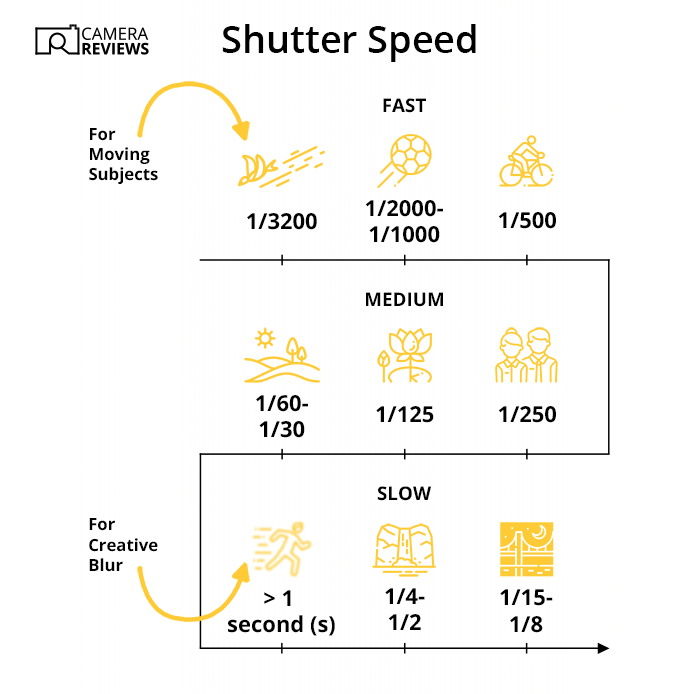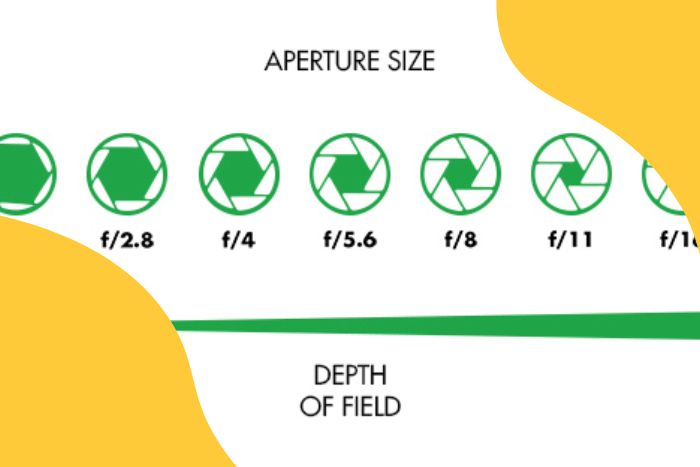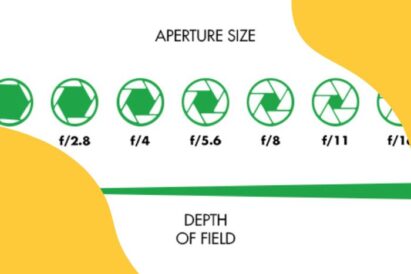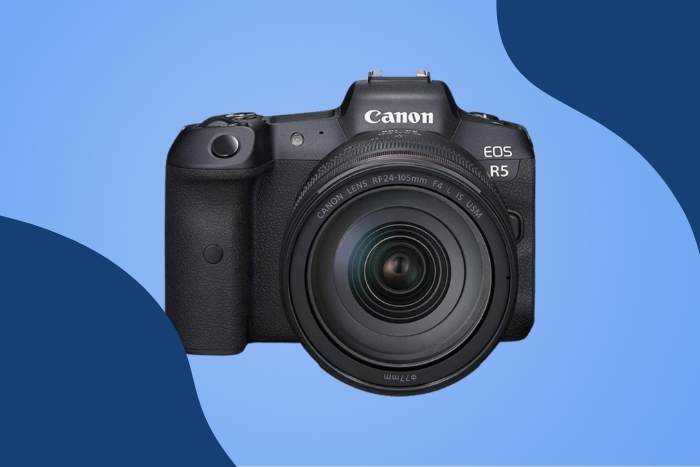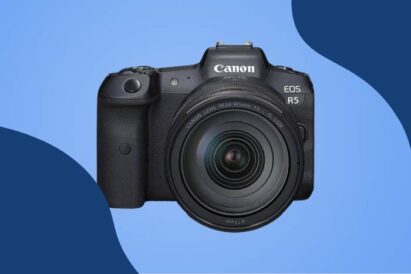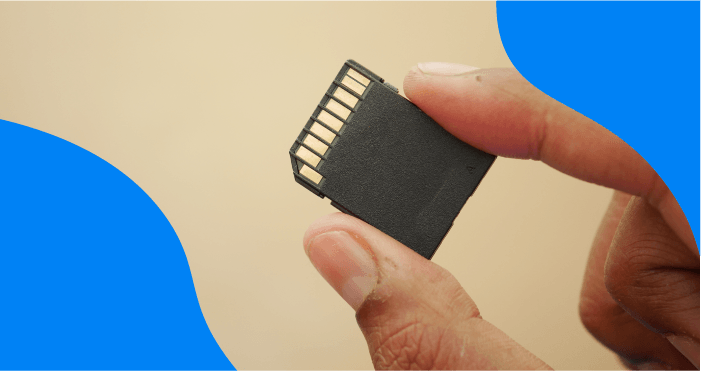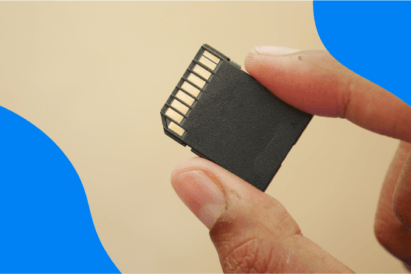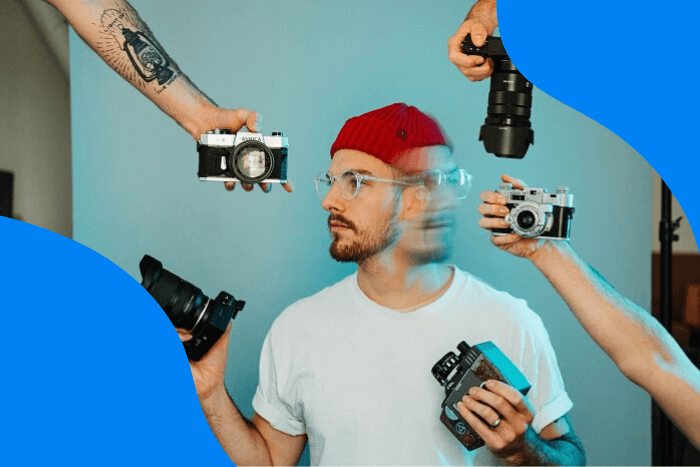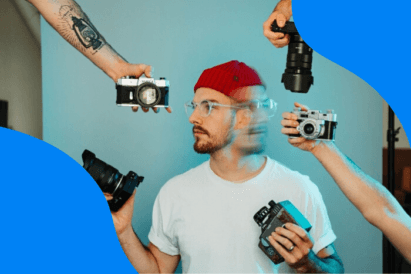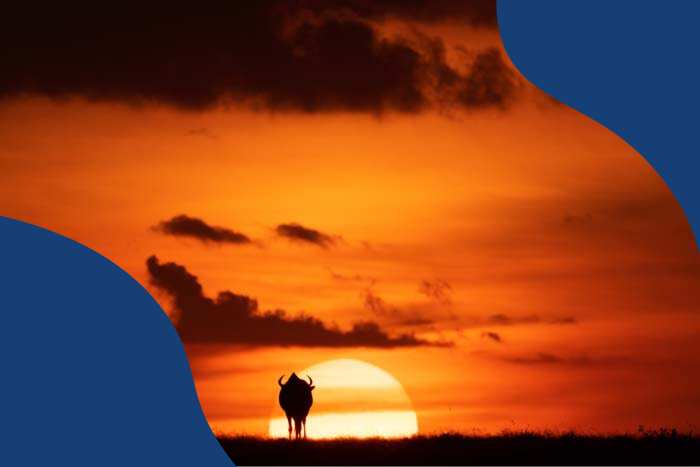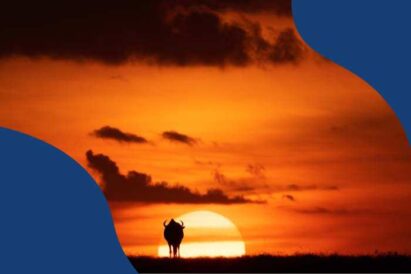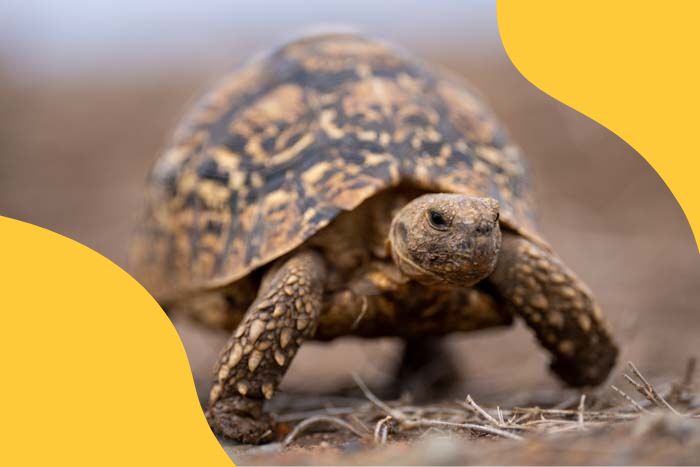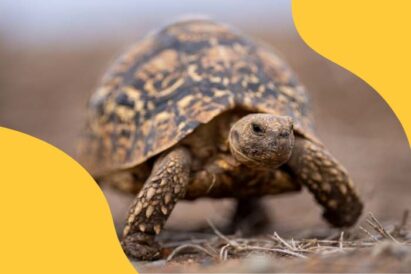This article explores when we should use a slow vs fast shutter speed… Shutter speed can have a huge effect on the final image. But results can be hard to achieve and might not be to everyone’s taste. Shooting handheld with a fast shutter speed is ideal. But using a tripod with a slow shutter speed isn’t practical in certain situations.
Also, deliberate motion blur creates a very different image that not everyone will like! On the plus side, slow shutter speeds allow you to shoot in low-light conditions when you can’t open your aperture or raise your ISO any further. They also suggest energy and motion in your images using a slow pan. It’s tricky to master, but the results speak for themselves.

What Is Shutter Speed in Photography?
Shutter speed is also known as “exposure time” or “time value.” It is the amount of time a camera exposes the image sensor (or film) to light passing through the lens. It is measured in fractions (and whole numbers) of a second (s).
The camera shutter itself can be either mechanical or electronic:
- If it’s mechanical, it’s a physical barrier that reveals each part of the sensor for a given amount of time.
- If it’s electronic, it’s not really a camera shutter at all. It’s just a way of switching all the sensor pixels on for a certain amount of time.
Using the phrase “shutter speed” to describe a unit of time can be a bit confusing. And Canon uses “time value” instead. This makes more sense.
But everybody else says shutter speed. So you’re better off sticking with the majority—unless you happen to be a Canon user!
How to Change Shutter Speed
After you switch on your camera, you need to pick the correct exposure mode. You can choose Auto (A), Program (P), or one of the semi-automatic Scene modes. Then the camera will choose the “right” shutter speeds to get the “right” exposures.
But to set your shutter speed manually, you need to switch to Manual mode (M) or Shutter Priority mode (S or Tv) by turning the main dial.
In either of these modes, you can usually select the shutter speed by simply turning a dial on the top or rear of the camera body. Shutter Priority mode is useful for slow pan shots when the shutter speed is far more important than the aperture.
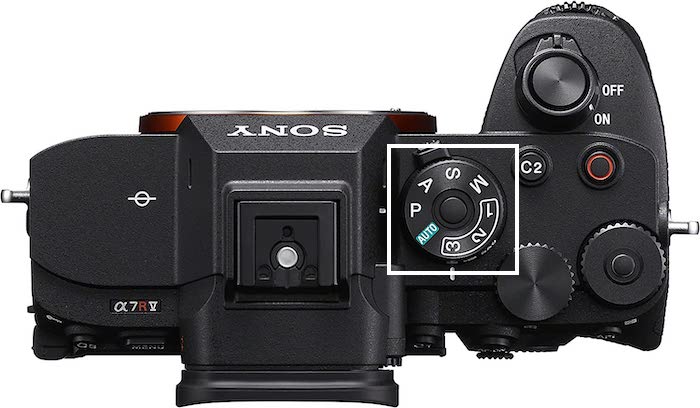
Shutter Speed, Aperture, ISO, and Exposure
Both shutter speed and aperture control exposure and sharpness. But I’m confident more photographers shoot in Aperture Priority mode rather than Shutter Priority.
Why is that? The answer has to do with the importance of depth of field, which is controlled partly by the aperture.
If you’re a portrait or wildlife photographer, you probably want a shallow depth of field to separate the subject from the background.
If you’re a landscape photographer, you probably want front-to-back sharpness. In both cases, the aperture setting is vital. Either way, you balance shutter speed, aperture, and ISO (the “exposure triangle”) for the best exposure.
What Is a Slow Shutter Speed?
There’s no strict definition of a “slow” shutter speed. But it usually describes one slow enough to introduce motion blur—or for you to need a tripod!
How and When to Use a Slow Shutter Speed
Most people want their photographs to be sharp. This generally means using fast (or high) shutter speeds.
But that’s not always possible—or desirable. If you’re taking pictures at night, there probably won’t be enough light to get the correct exposure with fast shutter speeds.
Or you might actually want some motion blur in your images to show energy and movement. That’s only possible with a slow shutter speed.

In low light, the exposure triangle almost always involves a trade-off between shutter speed, aperture, and ISO. If you can’t or won’t widen your aperture, the only way to reduce the ISO is to reduce the shutter speed.
If your subject is static, the best way is to start by taking a couple of shots at the ideal shutter speed. You can then take several more bursts, halving the shutter speed and doubling the number of shots each time.
If you review them in reverse order, the first sharp shot you find will be the one with the lowest ISO—and the lowest noise.
Slow Shutter Speed Examples
It’s easy to assume that the “right” shutter speed is one that’s fast enough to freeze any movement. That’s certainly one way to do it. But several shots rely on a slow shutter speed:
- Astrophotography: This includes star trails and shots of the Milky Way or Northern Lights
- Fireworks
- Light Painting: Using a torch or sparklers to “paint” a word or picture in the air at night
- Low-light Landscapes: Usually shot with a tripod
- Landscapes with Moving Clouds: Shot with a tripod
- Low-light Portraits: When you want to keep the ISO down
- Portraits in Long Grass: With the wind blurring the grass
- Slow Pans: Following a moving subject and using a slower shutter speed to blur moving parts and the background
- Traffic (Light) Trails: Showing streaks of headlights and brake lights
- Waterfalls, Rivers, or the Sea: To show moving water as a creamy smoothness

What Is a Fast Shutter Speed?
Again, there’s no generally accepted definition of a ‘fast’ shutter speed. But most people would say it describes one that’s fast enough to freeze any subject movement and compensate for any camera shake.
One way of looking at it is to use the “reciprocal rule.” Long lenses magnify any camera shake.
So you’re not supposed to use a shutter speed slower than the focal length’s reciprocal. For example, with a 500mm lens, you shouldn’t use a shutter speed slower than 1/500 s.
But there’s a problem with the reciprocal rule. Image stabilization has become so good in cameras and lenses that it’s now worth up to eight stops.
What does this mean? Theoretically, you can use a shutter speed as slow as half a second rather than 1/500 s!
How and When to Use a Fast Shutter Speed
The whole point of a fast shutter speed is to reduce blur. This is caused by camera shake or subject movement. The faster the shutter speed, the less the effect of either of those two factors.
The trick is to know exactly how fast your shutter speed needs to be. If you raise it too much, you’ll get too much noise (using a higher ISO) or too little depth of field (using a wider aperture).
Fast Shutter Speed Examples
I’m a wildlife photographer. And I’ve taken photos on over 250 African game drives. But I never know what I’m going to see in advance. So I have to choose a “default” shutter speed, aperture, and ISO.
I almost always shoot wide open in Manual mode with Auto ISO. My shutter speeds are as follows:
- 1/1000 s for animals
- 1/3200 s for birds in flight
- 1/4 to 1/100 s for slow pan shots—depending on the speed of the animal or bird
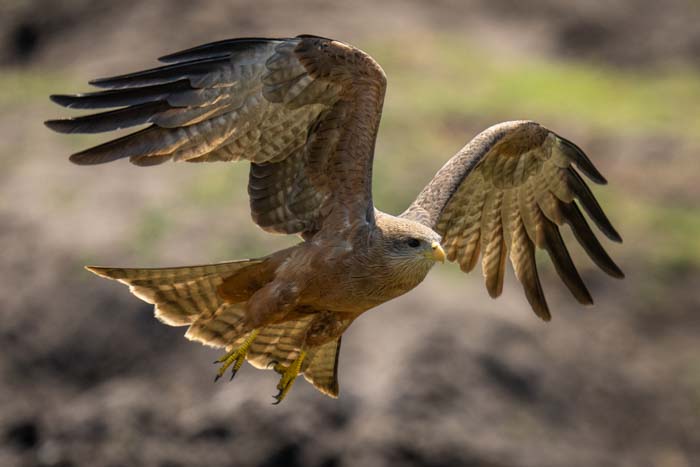
But I’m always ready to slow down or speed up my shutter speed to get a better ISO. For instance, if a bird lands on a branch, I don’t need 1/3200 s anymore. I can get away with 1/500 s—or even less.
Of course, photographers in different genres will have their own “go-to” shutter speeds. Here are a few examples:
- 1/125 s for still life photographers
- 1/250 s for fashion, studio, or portrait photographers (or the highest flash sync speed if using a flashgun or strobe)
- 1/500 s for street photography or photojournalists
- 1/1000 s for sports photographers
A landscape photographer will probably use a tripod. And they’ll use the lowest native ISO (e.g., 64 or 100) and a narrow aperture (e.g., f/16) in Aperture Priority mode.
That means the shutter speed could be anything. The only exceptions are low light and any movement in the scene.
Conclusion
A photo’s depth of field is very important. So people can treat shutter speed in photography as an afterthought to aperture. But that’s a little unfair. Both settings control exposure and blur—just in different ways.
The aperture controls the depth of field while the shutter speed controls motion blur. This is something to avoid if it’s caused by camera shake. But shutter speed can be used creatively if it’s due to the movement of your subject.
You must decide when to use slow vs fast shutter speeds for action shots. A fast shutter speed can freeze your subject. But a slow shutter speed can also work if you pan across to follow your subjects. It all depends on what kind of shot you want.
Frequently Asked Questions about Shutter Speed
Here are answers to the FAQs we see most about slow vs fast shutter speed.
What Is a Good Shutter Speed?
The best shutter speed depends on your focal length, the subject’s speed, and how much blur you want.
Longer lenses tend to magnify camera shake. So it’s best to use a faster shutter speed. But image stabilization can help. A faster shutter speed is also important if you want to “freeze” the action with a fast-moving subject.
For a slow pan, you need a shutter speed slow enough to blur the background and moving parts of your subject… like legs or wings. But you want to keep other areas like the head sharp. This might be 1/100 s for a cheetah or 1/4 s for an elephant.
What Shutter Speed Is Best for Long Exposure?
There are many different types of long-exposure shots. That means your shutter speed will depend on what you’re shooting and what effect you’re trying to create. If you want star trails, say, you might set it to 20 to 90 seconds. But if you’re shooting fireworks, you might only need a second.
Does a Higher Shutter Speed Cause Blur?
No, it’s the opposite. Motion blur is caused by camera shake or subject movement. In either case, a faster shutter speed will reduce the amount of blur. This is because your subject has less time to move from one part of the frame to another to cause “smearing'” or “streaking.”
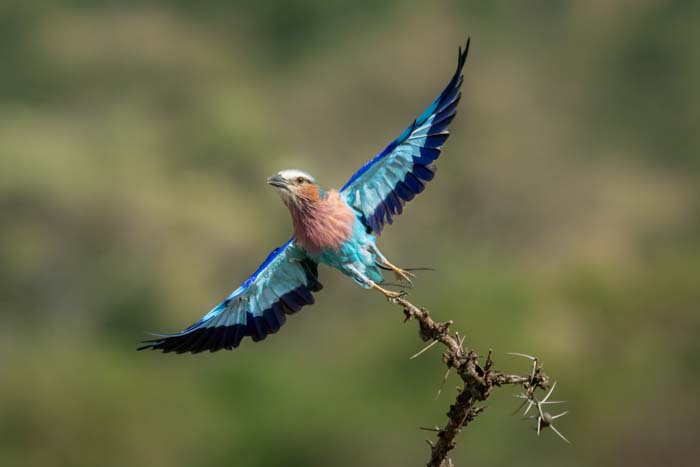
What Is the 500 Rule Shutter Speed?
This is a rule to help you set your shutter speed in astrophotography. Basically, the wider your lens, the longer your shutter speed can be before the stars move far enough to cause blur.
To apply the rule, you have to divide 500 by the effective focal length of your lens to get the answer. For example, with a 50mm lens, you have 10 seconds before the stars become blurred (500 ÷ 50 = 10).
But it’s different if you have a crop sensor (APS-C) camera. You first must multiply the focal length by the crop factor to calculate the effective focal length.
What Is a Slow Shutter Speed Good For?
A slow shutter speed in photography is generally best for low-light situations and for creating motion blur. Sometimes, such as photographing the night sky, there’s not enough light to use a fast shutter speed.
But if you want your stars to be dots rather than streaks, you can’t set too slow a shutter speed. That’s because the stars move (albeit very slowly!). So motion blur will creep in as you reduce the shutter speed.

Which Shutter Speed Is Sharpest?
Most people automatically think a fast shutter speed gives you the sharpest shot. That’s generally true if there’s plenty of light and you’re talking about the whole image. But sharpness is also affected by the aperture and ISO.
For instance, a landscape photographer might need to use a slow shutter speed to take a shot of a moonlit scene at 100 ISO and f/16.
In addition, slow pan shots should keep part of the subject sharp, like the head… even if the background and other moving parts, like legs and wings, are blurred.
What Is a Good Slow Shutter Speed?
If you’re taking slow pan action shots, it depends on the speed of your subject and its direction of travel.
Two examples… A faster subject traveling across the frame at 90 degrees to the line of sight needs a faster shutter speed. A slower subject traveling at 45 degrees needs a slower shutter speed.
You get more motion blur with a slower shutter speed—which is what you want. But it also makes it harder to keep the head or other parts sharp. That’s when practice makes perfect!
What’s Next?
Now you’ve learned about shutter speed, you may want to continue your basic photography education and check out our posts on camera parts, camera terms, and basic camera settings next!


